Electrical Safety Standards for Wiring Harnesses
As the core component of electrical systems, the safety performance of wiring harnesses directly affects the operational reliability of equipment and personal safety.
In fields such as automotive, aerospace, industrial control, and household appliances, wiring harnesses must comply with stringent electrical safety standards, covering critical requirements including insulation performance, voltage resistance, flame retardancy, mechanical strength, and environmental adaptability.
International standards (e.g., ISO, IEC), regional standards (e.g., ECE in the EU, SAE/UL in North America), and national standards (e.g., China’s GB/T) collectively establish the technical framework for wiring harness safety, ensuring stability and security under complex operating conditions.
This article will systematically introduce the major electrical safety standards for wiring harnesses and their core requirements, providing a reference for design, testing, and application.

Table of contents
Ⅰ.Electrical Safety Standards for Wiring Harnesses
International general standards are primarily established by the International Organization for Standardization (ISO) and the International Electrotechnical Commission (IEC), applicable to the design, manufacturing, and testing of wiring harnesses worldwide.
1. ISO Standards
(1) ISO 6722 “Road vehicles – 60 V and 600 V single-core cables – Dimensions, test methods and requirements”
Scope of application: Applies to automotive low-voltage (≤60V) and partial high-voltage (≤600V) wiring harnesses.
▶▶Key requirements:
▶Conductor size and current-carrying capacity:
▪Specifies the maximum allowable current for conductors of different cross-sectional areas (e.g., 0.5mm² conductor ≤11A).
▶Temperature grades:
▪Standard type: -40°C ~ 85°C
▪High-temperature type: -40°C ~ 125°C (e.g., engine compartment wiring harnesses)
▶Environmental resistance:
▪Oil resistance: After immersion in engine oil (70°C/168h), insulation resistance ≥10MΩ.
▪Abrasion resistance: Cables must pass 10,000 reciprocating friction tests (5N load).
▶Flame retardancy:
▪Complies with ISO 3795 burning test, burning rate ≤100mm/min.
(2) ISO 19642 “Road vehicles – High-voltage cables”
Scope of application: Applies to high-voltage wiring harnesses (60V~1000V) for electric vehicles (EV) and hybrid electric vehicles (HEV).
▶▶Key requirements:
▶Voltage grades:
▪600V class (standard electric vehicles)
▪1000V class (premium electric vehicles or commercial vehicles)
▶Insulation and shielding:
▪Insulation layer must pass 3000V AC withstand voltage test (no breakdown for 5 minutes).
▪Shielding coverage ≥90%, suppressing electromagnetic interference (EMI).
▶Fire safety:
▪Complies with ISO 6722 flame retardancy requirements, some scenarios require UL 94 V-0 rating (self-extinguishing).
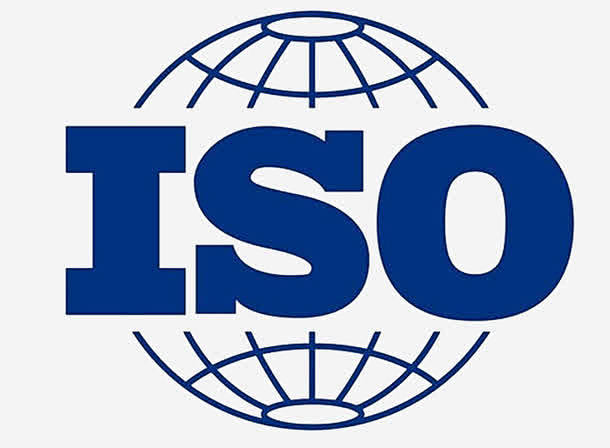
2. IEC Standards
(1) IEC 60512 “Connectors for electronic equipment – Tests and measurements”
Scope of application: Applies to automotive low-voltage (≤60V) and partial high-voltage (≤600V) wiring harnesses.
▶▶Key requirements:
▶Contact resistance: ≤5mΩ (high-current terminals require ≤1mΩ).
▶Insulation resistance: ≥100MΩ (500V DC test).
▶Withstand voltage test:
▪Low-voltage wiring harnesses: 1000V AC/1 minute without breakdown.
▪High-voltage wiring harnesses: 2500V AC/1 minute without breakdown.
(2) IEC 60085 “Thermal evaluation and classification of electrical insulation”
Scope of application: Specifies the thermal endurance classes of insulation materials.
▶▶Key requirements:
| Thermal Class | Maximum Allowable Temperature | Typical Applications |
| Y (lowest) | 90°C | General household appliance wiring harnesses |
| A | 105°C | Automotive interior wiring harnesses |
| E | 120°C | Industrial equipment wiring harnesses |
| B | 130°C | Engine compartment wiring harnesses |
| F | 155°C | High-temperature environment wiring harnesses |
| H (highest) | 180°C | Aerospace wiring harnesses |
(3) IEC 60245 “Rubber insulated cables”
Scope of application: Applies to flexible, oil-resistant rubber-insulated wiring harnesses (e.g., construction machinery, drag chain cables).
▶▶Key requirements:
▶Mechanical strength: Minimum tensile strength ≥10MPa.
▶Oil resistance: After immersion in IRM 902 oil (100°C/24h), tensile strength retention rate ≥70%.
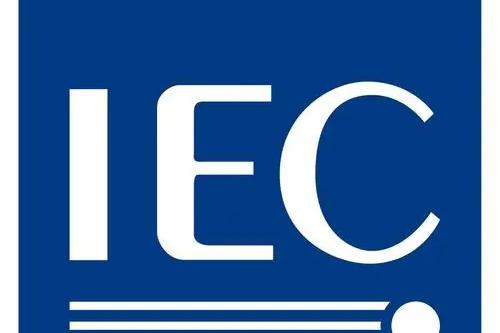
3. Other International Standards
(1) IPC/WHMA-A-620 “Requirements and Acceptance for Cable and Wire Harness Assemblies”
Scope of application: Wiring harness process standards for the electronics industry (e.g., consumer electronics, military).
▶▶Key requirements:
▶Terminal crimping:
▪No loosening or exposed copper strands.
▪Crimp pull test (e.g., 22AWG wire ≥50N).
▶Solder joint quality: No cold solder joints, compliant with IPC-A-610 Class 3 (high reliability).
(2) UL 758 “Appliance Wiring Material Standard”
Scope of application: Safety certification for appliance wiring harnesses in the North American market.
▶▶Key requirements:
▶Flame ratings:
▪No loosening or exposed copper strands.
▪UL VW-1 (vertical flame test, self-extinguishing time ≤30 seconds).
▪UL 94 HB/V-0/V-1/V-2 (plastic flame retardancy ratings).

Summary
International general standards provide systematic specifications for the electrical safety of wiring harnesses, covering:
▶Flame ratings:
✅ ISO: Focuses on temperature and environmental resistance of automotive wiring harnesses (low-voltage/high-voltage).
✅ IEC: Focuses on insulation materials, connectors, and high-voltage safety testing.
✅ Other standards (IPC/UL): Supplement process and fire protection requirements.
Enterprises must select appropriate standards based on product application fields (e.g., automotive, aerospace, household appliances) and ensure compliance with testing and certification to guarantee long-term reliability and safety of wiring harnesses.
II. Regional/National Standards
Electrical safety standards for wiring harnesses vary across different countries and regions, with distinct regulations and industry specifications, primarily covering low-voltage harnesses, high-voltage harnesses, material selection, and testing methods.
The following is a categorized introduction to the main standards in key regions and countries :
1. European Standards
European wiring harness standards are primarily based on automotive industry requirements and are influenced by EU regulations (e.g., ECE R100) and German automotive industry standards (e.g., LV 112).
(1) LV 112 (German Automotive Industry Standard)
Scope: Low-voltage wiring harnesses (12V/24V systems).
▶▶Key requirements:
▶Conductor specifications: Defines cross-sectional area, current-carrying capacity, and color coding.
▶Temperature rating: Typically -40°C to 105°C (125°C required for high-temperature areas).
▶Mechanical strength: Harnesses must pass bending and vibration tests to ensure long-term reliability.
▶Protection requirements: Branch points must be protected with corrugated tubes or tape to prevent abrasion.
(2) ECE R100 (UN Electric Vehicle Regulation)
Scope: High-voltage wiring harnesses for electric vehicles (>60V).
▶▶Key requirements:
▶Insulation performance: High-voltage cables must pass withstand voltage tests (e.g., DC 1500V/1 minute).
▶Protection rating: High-voltage connectors must meet IP67 (dustproof and waterproof).
▶Short-circuit protection: Harnesses must include fuses or circuit breakers to prevent overload.
▶EMC requirements: High-voltage harnesses must use shielded structures (≥90% coverage).
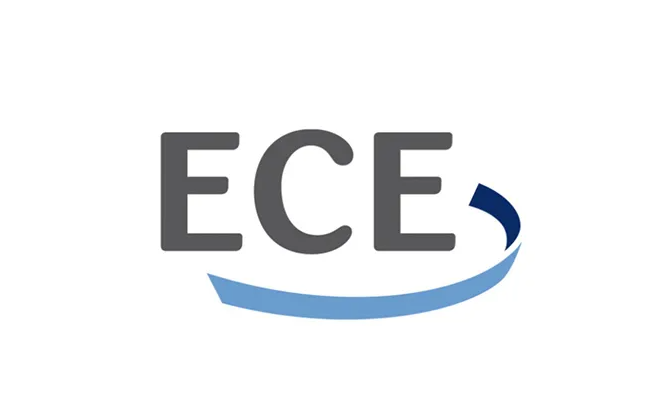
(3) EN 50620 (European Charging Cable Standard)
Scope: Electric vehicle charging harnesses.
▶▶Key requirements:
▶Withstand voltage: AC 1000V/DC 1500V withstand voltage test.
▶Fire resistance: Complies with EN 60332 flame retardancy standard.
▶Mechanical strength: Charging plugs must pass insertion/extraction life tests (≥10,000 cycles).

2. North American Standards
North American wiring harness standards are primarily established by SAE (Society of Automotive Engineers) and UL (Underwriters Laboratories), focusing on safety and reliability.
(1) SAE J1128 (Automotive Low-Voltage Cable Standard)
Scope: 12V/24V automotive wiring harnesses.
▶▶Key requirements:
▶Conductor types: E.g., GPT (general purpose), TXL (extra thin wall insulation).
▶Temperature ratings: Typically 80°C, 105°C, 125°C.
▶Oil resistance: Cables must pass ASTM D471 fuel immersion tests.

(2) UL 758 (Appliance Wiring Material Standard)
Scope: Household appliance and industrial equipment wiring harnesses.
▶▶Key requirements:
▶Fire rating: Must pass UL VW-1 vertical flame test.
▶Insulation materials: Must comply with UL 1581 thermal aging tests.

(3) SAE J3068 (Electric Vehicle High-Voltage Cable)
Scope: High-voltage systems (>600V) for electric vehicles.
▶▶Key requirements:
▶High-voltage resistance: DC 3000V withstand voltage test.
▶Shielding effectiveness: Must meet SAE J1113 EMC requirements.
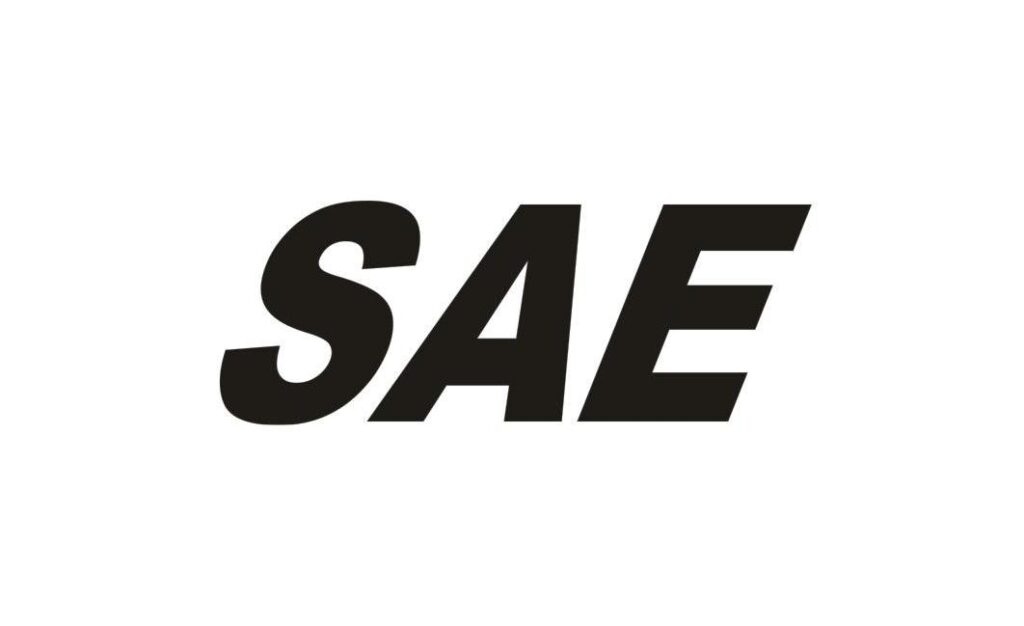
3. Chinese Standards
North American wiring harness standards are primarily established by SAE (Society of Automotive Engineers) and UL (Underwriters Laboratories), focusing on safety and reliability.
(1) GB/T 25085 / GB/T 25087 (Electric Vehicle High-Voltage Cables)
Scope: High-voltage systems for pure electric and hybrid vehicles.
▶▶Key requirements:
▶Withstand voltage: DC 1500V withstand voltage test (1 minute no breakdown).
▶Temperature range: -40°C to 125°C (high-temperature versions up to 150°C).
▶Flame retardancy: Complies with GB/T 18380.12 single-wire vertical flame test.
(2) QC/T 29106 (Technical Specifications for Automotive Low-Voltage Wiring Harnesses)
Scope: Conventional fuel vehicles and low-voltage electric vehicle harnesses.
▶▶Key requirements:
▶Terminal crimping: Pull-out force must meet standards (e.g., 0.5mm² conductor ≥50N).
▶Salt spray test: Terminals must show no severe corrosion after 96-hour test.
▶Vibration resistance: Fixing points must pass 20Hz~200Hz random vibration tests.
(3) GB/T 20234 (Electric Vehicle Charging Interface)
Scope: Charging stations and vehicle charging harnesses.
▶▶Key requirements:
▶Insertion/extraction cycles: ≥10,000 for AC plugs, ≥5,000 for DC.
▶Protection rating: Charging interfaces must meet IP54 (IP55 for outdoor).
4. Japanese Standards
Japanese wiring harness standards are mainly influenced by JASO (Japanese Automotive Standards Organization) and JIS (Japanese Industrial Standards).
(1) JASO D608 (Automotive Low-Voltage Wiring Harnesses)
▶▶Key requirements:
▶Conductor specifications: Defines cross-sectional area and current-carrying capacity.
▶Heat resistance: 105°C or 125°C grades available.

(2) JIS C 3406 (High-Voltage Cables)
Scope: Industrial and automotive high-voltage applications.
▶▶Key requirements:
▶Withstand voltage: AC 3000V/5-minute test.
▶Flame retardancy: Complies with JIS C 3005 standard.
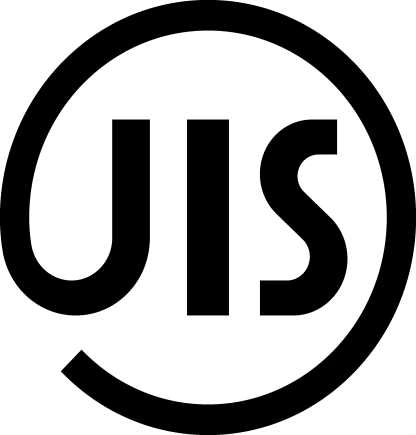
Summary
Wiring harness electrical safety standards in different regions/countries have distinct emphases:
✅ Europe: Focuses on high-voltage safety (ECE R100) and EMC performance.
✅ North America: Prioritizes fire protection (UL 758) and high-voltage cable reliability (SAE J3068).
✅ China: Integrates ISO with local requirements, emphasizing new energy harnesses (GB/T 25085).
✅ Japan: Centers on JASO/JIS with attention to detailed reliability.
Enterprises must select appropriate certification standards based on target markets to ensure compliance and safety in harness design.
III. Classification of Key Safety Requirements
The electrical safety standards for wiring harnesses involve multiple key performance indicators to ensure their reliability, durability, and safety under various operating conditions.
They can be mainly categorized into electrical performance, mechanical performance, environmental resistance, flame retardancy, and EMC (electromagnetic compatibility) :
1. Electrical Performance
Electrical performance is the core of wiring harness safety, directly affecting its conductivity, insulation protection, and anti-interference capability.
(1) Insulation Resistance:
▶The insulation resistance of the harness must be ≥100MΩ (e.g., QC/T 29106) to effectively prevent leakage current in high-humidity or contaminated environments.
▶Test method: Apply 500V DC voltage and measure the resistance between the conductor and the shielding layer/outer sheath.
(2) Withstand Voltage (Dielectric Strength):
▶Low-voltage harnesses: Generally required to withstand 500V AC or 750V DC for 1 minute without breakdown (e.g., ISO 6722).
▶High-voltage harnesses (EVs): Must meet higher withstand voltage requirements, such as 1500V DC (GB/T 25085) or 3000V AC (some international standards).
(3) Contact Resistance:
▶The contact resistance between terminals and conductors must be ≤5mΩ (IEC 60512) to prevent overheating or arcing due to poor contact.
(4) Current-Carrying Capacity:
▶The conductor cross-sectional area must match the rated current (e.g., SAE J1128 specifies ≤11A for 0.5mm² conductors).

2. Mechanical Performance
Wiring harnesses are subjected to mechanical stresses such as vibration, bending, and tension in vehicles or equipment, and must ensure no failure during long-term use.
(1) Flex Life:
▶For example, ISO 6722 requires that harnesses must not exhibit breaks or insulation damage during dynamic bending tests (e.g., 5,000 cycles).
(2) Terminal Crimp Strength:
▶The pull-out force between terminals and conductors must comply with standards, such as ≥50N for 0.5mm² conductors (QC/T 29106).
▶Cross-sectional analysis is required after crimping to ensure no voids or metal deformation.
(3) Vibration Resistance:
▶Vibration tests (e.g., 10-2000Hz random vibration per SAE J2380) must show no loosening or breakage of the harness.
3. Environmental Resistance
Wiring harnesses must withstand extreme environmental conditions such as temperature, humidity, and chemical corrosion.
(1) Temperature Range:
▶Automotive harnesses typically require -40°C to 125°C (ISO 6722), while high-voltage harnesses for new energy vehicles may need higher temperature resistance (e.g., 150°C).
(2) Chemical Resistance:
▶Must resist corrosive substances like engine oil, coolant, and salt spray (e.g., 96-hour salt spray test per ISO 9227).
(3) Water and Dust Resistance (IP Rating):
▶For example, high-voltage harness connectors must meet IP67 (GB/T 25085), meaning dustproof and capable of temporary immersion.

4. Flame Retardancy
Wiring harnesses must have flame-retardant properties to prevent fire spread.
(1) Flammability Performance:
▶Horizontal burning rate ≤100mm/min (ISO 3795).
▶Vertical flame test (UL 94 VW-1) requires self-extinguishing within ≤30 seconds.
(2) Smoke and Toxicity:
▶Applications like aviation and subways require low-smoke zero-halogen (LSZH) materials, producing low smoke density and non-toxic emissions when burned (e.g., EN 45545-2).
5. EMC (Electromagnetic Compatibility)
High-voltage harnesses must minimize electromagnetic interference (EMI) to avoid affecting vehicle electronics.
(1) Shielding Effectiveness:
▶High-voltage cable shielding coverage ≥90% (ISO 19642), with shielding resistance ≤20mΩ/m.
▶Test method: Radiated interference testing per CISPR 25.
(2) Grounding Design:
▶Shielding layers must be reliably grounded to avoid common-mode noise interference (e.g., LV 112 specifies grounding resistance ≤0.1Ω).

Summary
The electrical safety of wiring harnesses requires comprehensive consideration of electrical, mechanical, environmental, flame retardancy, and EMC requirements. Different application fields (e.g., automotive, aviation, industrial) have different emphases, and corresponding standards must be selected for verification.
IV. Testing Method Standards
To ensure the electrical safety performance of wiring harnesses meets industry requirements, a series of rigorous tests must be conducted for verification.
Testing method standards cover electrical performance, mechanical strength, environmental adaptability, and flame retardancy. The following are key test items and their corresponding standards:
1. Electrical Performance Testing
(1) Insulation Resistance Test
▶Standards: ISO 6722, QC/T 29106
▶Method: Measure insulation resistance between conductors and shielding layer or adjacent conductors under 500V DC voltage, requiring ≥100MΩ.
▶Purpose: Verify whether insulation materials effectively prevent leakage current or short circuits.
(2) Withstand Voltage Test (High Voltage Breakdown Test)
▶Standards: IEC 60245-2, GB/T 25085
▶Method:
▪Low-voltage harnesses: Apply 500V AC or 750V DC voltage for 1 minute without breakdown or flashover.
▪High-voltage harnesses (EVs): Apply 1500V DC or higher (e.g., 3000V) for 1-5 minutes.
▶Purpose: Ensure harness insulation does not fail under high voltage.
(3) Contact Resistance Test
▶Standard: IEC 60512
▶Method: Use micro-ohmmeter to measure contact resistance between terminals and conductors, typically requiring ≤5mΩ (specific values depend on wire gauge).
▶Purpose: Prevent overheating or energy loss due to poor contact.
2. Mechanical Performance Testing
(1) Terminal Crimp Strength Test
▶Standards: QC/T 29106, USCAR-21
▶Method: Use tensile testing machine to measure pull-out force between terminals and conductors, e.g.:
▪0.5mm² conductor ≥50N, 1.0mm² conductor ≥80N.
▶Purpose: Ensure reliable crimping process to prevent detachment during use.
(2) Flex Test (Flexibility Endurance)
▶Standards: ISO 6722, SAE J1128
▶Method: Repeatedly bend harness at specified radius (e.g., 5× wire diameter) for cycles (e.g., 5,000 times), checking for conductor breakage or insulation damage.
▶Purpose: Simulate reliability under long-term vibration or movement scenarios.
(3) Vibration Test
▶Standards: SAE J2380, ISO 16750-3
▶Method: Apply random vibration within 10-2000Hz frequency range for 96 hours, checking for terminal loosening or conductor breakage.
▶Purpose: Verify harness vibration resistance during vehicle operation.
3. Environmental Adaptability Testing
(1) Temperature Cycling Test
▶Standard: IEC 60068-2-14
▶Method: Cycle between -40°C and 125°C (e.g., 100 cycles), checking for insulation cracking or conductor performance changes.
▶Purpose: Evaluate material stability under extreme temperatures.
(2) Salt Spray Test (Corrosion Resistance)
▶Standards: ISO 9227, GB/T 10125
▶Method: Expose terminals or connectors to 5% NaCl mist environment for 96 hours, assessing corrosion level.
▶Purpose: Simulate corrosion effects of coastal or de-icing environments on metal components.
(3) Chemical Resistance Test
▶Standard: ISO 6722
▶Method: Immerse harness in engine oil, coolant, etc. for 168 hours, checking for insulation swelling or peeling.
4. Flame Retardancy Testing
(1) Vertical Flame Test
▶Standards: UL 94 VW-1, ISO 3795
▶Method: Flame exposure for 30 seconds, self-extinguishing time ≤60 seconds after removal, with no dripping igniting cotton below.
▶Purpose: Ensure material flame retardancy to prevent fire spread.
(2) Smoke Density Test
▶Standard: IEC 61034 (for aviation/subway harnesses)
▶Method: Burn harness and measure smoke light transmittance, requiring ≥60% (for LSZH materials).
5. EMC (Electromagnetic Compatibility) Testing
(1) Shielding Effectiveness Test
▶Standards: ISO 19642, CISPR 25
▶Method: Measure high-voltage harness shielding attenuation via RF signal injection (typically ≥90dB).
▶Purpose: Prevent electromagnetic interference with vehicle electronics.
Summary
Testing method standards for wiring harnesses are the core basis for ensuring their safety and reliability, requiring selection of appropriate test items based on specific applications (e.g., automotive, aviation, industrial).
Design phase should include preliminary verification, while production phase requires strict sampling inspection to comply with international regulations (e.g., ECE R100) and customer technical requirements.

V. Emerging Field Standards
With the rapid development of emerging technologies such as new energy vehicles, intelligent connected vehicles, and high-power charging equipment, the electrical safety standards for wiring harnesses are constantly being updated and improved.
Emerging fields impose higher requirements on wiring harnesses for high-voltage resistance, high-current capacity, anti-interference, and extreme environment endurance. Relevant standards mainly cover areas such as electric vehicles, fast-charging technology, and autonomous driving.
1. Electrical Performance Testing
High-voltage wiring harnesses (typically 300V~1000V) used in electric vehicles (EV) and hybrid electric vehicles (HEV) must meet stricter electrical safety requirements. The main standards include:
(1) ISO 19642
▶Scope: High-voltage cables and harnesses for road vehicles.
▶▶Key requirements:
▶High-voltage resistance: Rated voltage 600V/1000V, must pass 1500V DC withstand voltage test.
▶Shielding performance: Braided shielding coverage ≥90% to reduce electromagnetic interference (EMI).
▶Flame retardancy: Complies with ISO 3795 vertical flame test, burning rate ≤100mm/min.
(2) GB/T 25085 & GB/T 25087 (Chinese Standards)
▶Scope: High-voltage wiring harnesses and connectors for electric vehicles.
▶▶Key requirements:
▶Insulation performance: No breakdown at DC 1500V withstand voltage test.
▶Protection level: Connectors must meet IP67 (dustproof and waterproof).
▶Environmental resistance: Maintains performance after -40°C~125°C temperature cycling test.
(3) LV 324 (Volkswagen High-Voltage Harness Standard)
▶▶Key requirements:
▶Mechanical strength: Harnesses must pass vibration, bending, and impact tests.
▶EMC requirements: High-voltage harnesses must comply with CISPR 25 EMC standard.

2. High-Power Charging Harness Standards
With the popularization of fast-charging technology (e.g., 800V high-voltage platforms), charging harnesses need to support higher currents (e.g., 500A) while ensuring safety. Main standards include:
(1) IEC 62196 (Charging Interface Standard)
▶Scope: EV charging guns and harnesses.
▶▶Key requirements:
▶Current-carrying capacity: Copper conductor cross-section must match charging current (e.g., ≥50mm² for 250A).
▶Temperature monitoring: Harnesses must integrate temperature sensors to prevent overheating.
(2) GB/T 20234 (Chinese Charging Interface Standard)
▶▶Key requirements:
▶Insertion/extraction cycles: Charging guns must maintain good contact after ≥10,000 insertions/extractions.
▶Protection level: Charging interfaces must meet IP54 (dustproof and splash-proof).
3. Autonomous Driving and Intelligent Connected Vehicle Harness Standards
Autonomous vehicles (ADAS) rely on high-speed data transmission, requiring higher shielding and anti-interference capabilities for wiring harnesses:
(1) OPEN Alliance (Automotive Ethernet Standard)
▶▶Key requirements:
▶Data transmission: Supports 1000BASE-T1 (1Gbps) high-speed communication.
▶EMC protection: Twisted pair + shielding layer to reduce signal crosstalk.

4. Robotics and Industrial Automation Harness Standards
Applications like industrial robots and AGVs (Automated Guided Vehicles) have strict requirements for harness flexibility and bend resistance:
(1) UL 508A (Industrial Control Panel Wiring)
▶▶Key requirements:
▶Oil and chemical resistance: Harness jackets must resist lubricant and coolant corrosion.
▶Bending lifespan: Cable carriers must pass ≥5 million bend cycle tests.

5. Future Trends: Lightweight and New Material Standards
Aluminum conductors replacing copper: Must comply with IEC 62821 (aluminum conductor electrical performance standard).
Optical fiber transmission: Complies with ISO 21214 (vehicle optical cable transmission protocol).
Summary
Requirements for wiring harnesses in emerging fields are becoming increasingly stringent, covering multiple dimensions such as high voltage, high speed, and high reliability.
Enterprises need to closely monitor standard updates (e.g., ISO 19642:2023) and optimize harness designs based on actual application scenarios (e.g., ultra-fast charging, autonomous driving) to ensure electrical safety and performance compliance.
No comments to show.



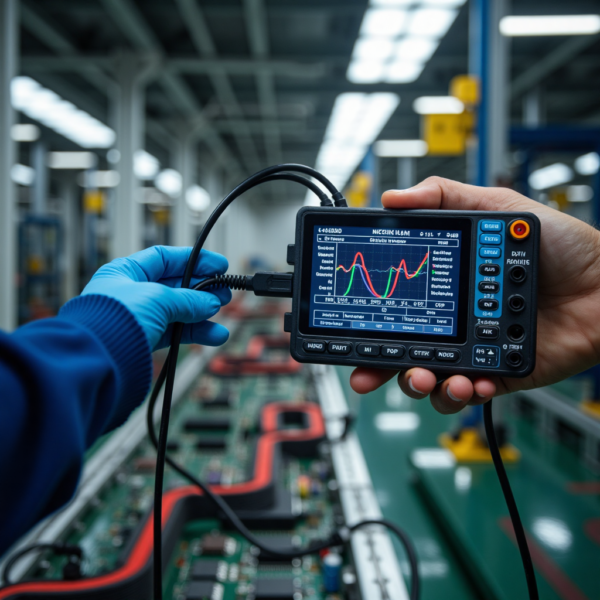
Leave a Comment